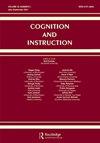Assembling a Torus: Family Mobilities in an Immersive Mathematics Exhibition
IF 2.6
1区 心理学
Q2 PSYCHOLOGY, EDUCATIONAL
引用次数: 13
Abstract
Abstract In this article, we report on a video-based field study of an intergenerational family’s enactment of a mathematical object (a torus) in the context of an immersive mathematics exhibition in a science center. To do this, we center interwoven, multi-party mobilities at multiple scales–walking, gesturing, touching, and postural adjustments – as key aspects of how family members co-assemble a local, multi-layered set of meanings for a mathematical object. Drawing on and blending approaches from science and technology studies and interaction analysis we investiage how immersive museum exhibitions can enable particular patterns of visitor mobility and provisionally reconfigure relations among walking, sensing, and knowing. In contrast to what we describe as a sedentarist bias in studies of learning and cognition in museums, we argue that walking and other movements across a wide range of scales are constitutive of visitors’ interpretive accomplishments, rather than mere backdrop to them.组装一个环面:沉浸式数学展览中的家庭流动性
摘要在这篇文章中,我们报道了一项基于视频的实地研究,在科学中心的沉浸式数学展览中,一个代际家庭对数学对象(环面)的设定。为了做到这一点,我们将多个尺度上交织的多方流动——行走、手势、触摸和姿势调整——作为家庭成员如何为数学对象共同构建一套局部、多层次意义的关键方面。我们借鉴并融合了科学技术研究和互动分析的方法,研究了沉浸式博物馆展览如何实现特定的游客流动模式,并暂时重新配置行走、感知和认知之间的关系。与我们在博物馆学习和认知研究中所描述的久坐主义偏见相反,我们认为,在大范围内行走和其他运动是游客解释成就的组成部分,而不仅仅是它们的背景。
本文章由计算机程序翻译,如有差异,请以英文原文为准。
求助全文
约1分钟内获得全文
求助全文
来源期刊

Cognition and Instruction
Multiple-
CiteScore
7.90
自引率
12.10%
发文量
22
期刊介绍:
Among education journals, Cognition and Instruction"s distinctive niche is rigorous study of foundational issues concerning the mental, socio-cultural, and mediational processes and conditions of learning and intellectual competence. For these purposes, both “cognition” and “instruction” must be interpreted broadly. The journal preferentially attends to the “how” of learning and intellectual practices. A balance of well-reasoned theory and careful and reflective empirical technique is typical.
 求助内容:
求助内容: 应助结果提醒方式:
应助结果提醒方式:


